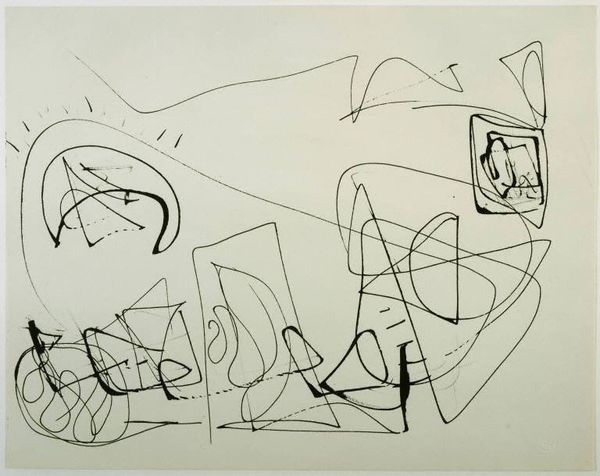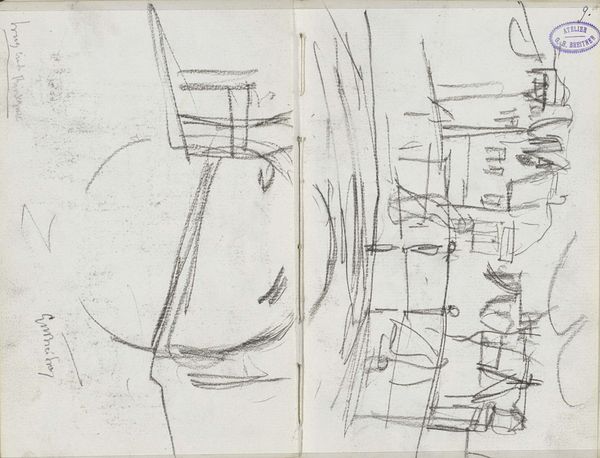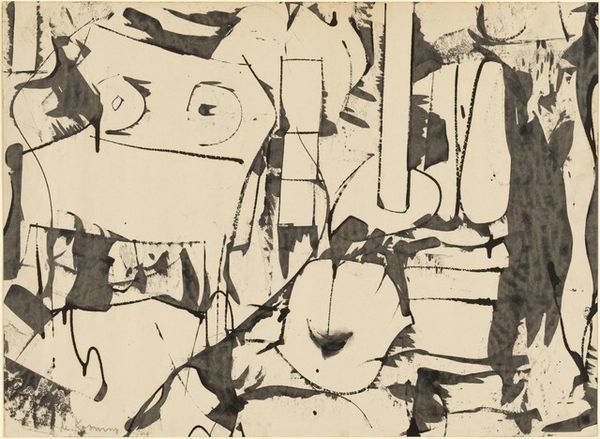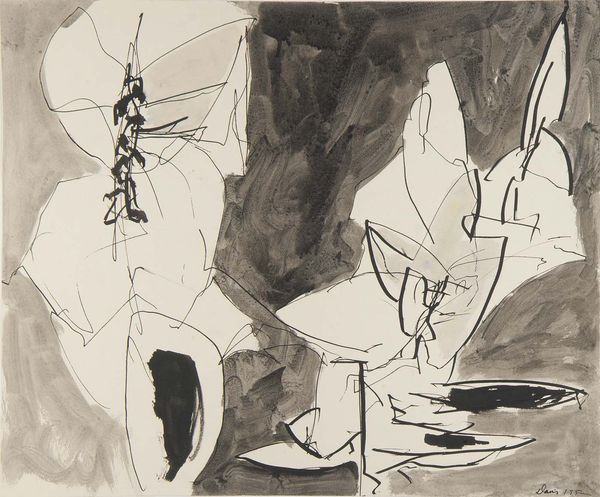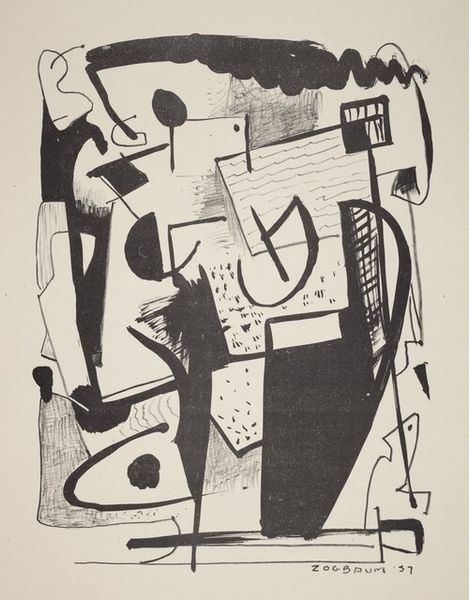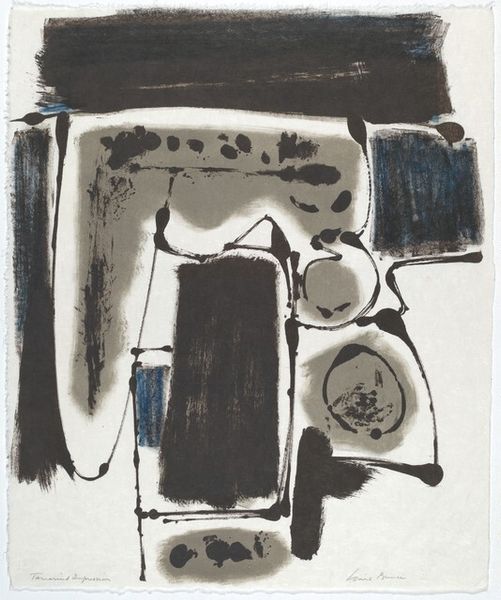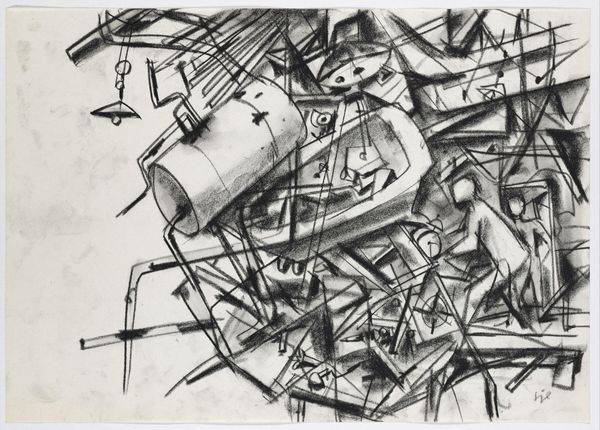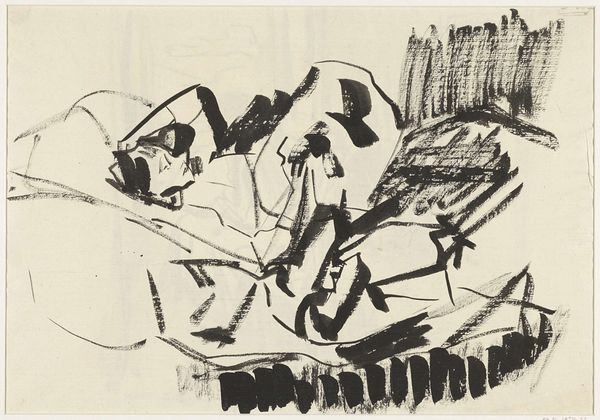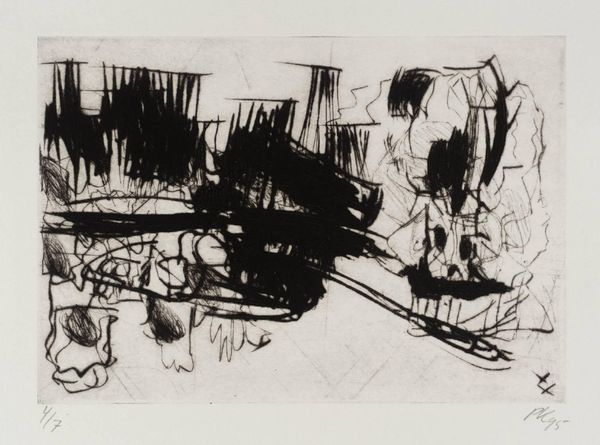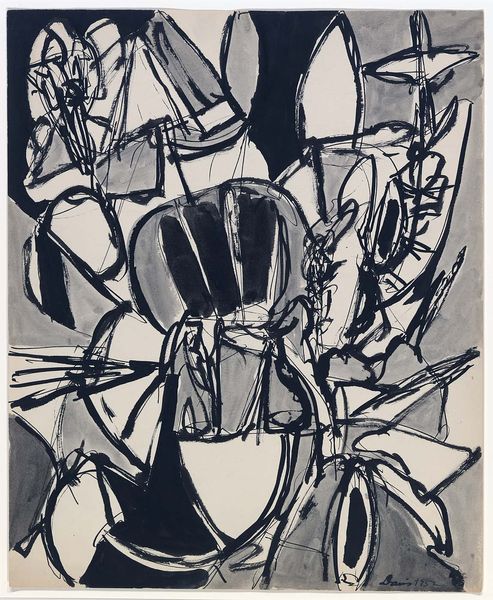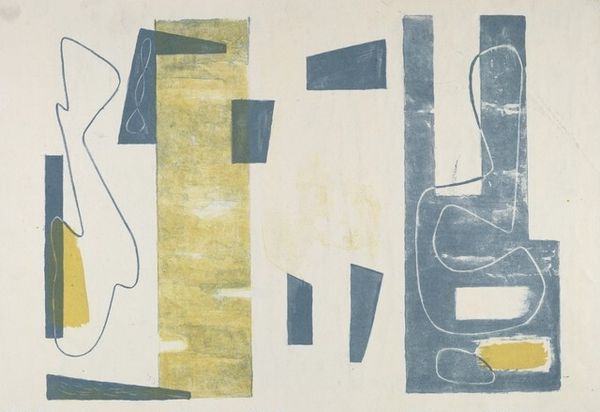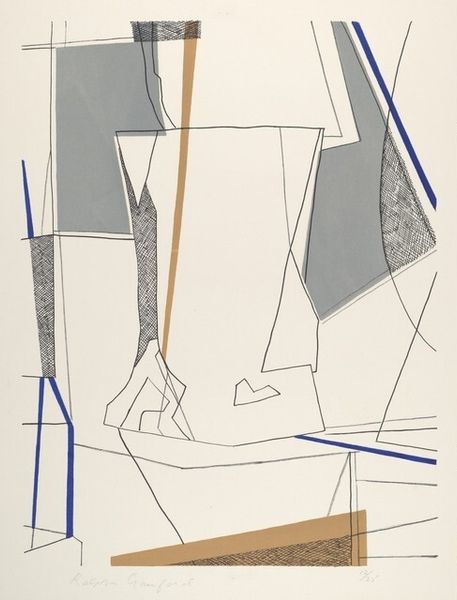
drawing, ink
#
abstract-expressionism
#
drawing
#
form
#
ink
#
geometric
#
abstraction
#
line
Copyright: Gene Davis,Fair Use
Editor: This is Gene Davis’s *Inner Space*, made in 1952 using ink on paper. It’s a busy composition, with geometric and organic forms coexisting uneasily. What do you see in this piece? Curator: This work strikes me as a potent visual metaphor for the societal anxieties percolating during the early Cold War. The stark black and white, the fragmented forms, they all speak to a world fractured by ideological conflict and the ever-present threat of nuclear annihilation. Editor: I hadn’t thought about the Cold War. What in the image points to that specifically for you? Curator: Well, consider the title *Inner Space*. On one level it refers to the purely abstract nature of the work, an exploration of form. But on another, doesn’t it evoke the psychological landscape of the era? The constant tension, the suppressed fears… This work seems to reflect the fracturing of the self under immense external pressure. Davis was working alongside artists grappling with similar anxieties – how might you link this with abstract expressionists and their turn to the self? Editor: I see your point about fracturing, that the negative spaces push against defined geometric shapes to hint at disorder or uncertainty, like how the fear of communism unsettled American society. But do you think this reading might overshadow Davis’s formal experimentation? Curator: Absolutely, it's a balancing act. But acknowledging the socio-political context enriches our understanding, it avoids isolating the artwork from its historical moment. After all, artistic choices are rarely made in a vacuum. What is it to consider the art making itself a type of activism? Editor: I've always focused on formal qualities like line and shape. Thinking about cultural context gives me so much more to consider. Curator: Indeed! By understanding the historical and social currents swirling around its creation, we unlock a deeper understanding of the artwork’s resonance and continued relevance.
Comments
No comments
Be the first to comment and join the conversation on the ultimate creative platform.

